
ASUS Strix GeForce GTX 980 DirectCU II OC 4GB Review
Manufacturer: ASUSUK price (as reviewed): £499.99 (inc VAT)
US price (as reviewed): Currently unavailable
In our Nvidia GeForce GTX 970 review roundup, we saw the ASUS Strix version of the card, and now we're looking at at the same variant of the flagship GTX 980 card. As you can imagine, there are a lot of similarities between the two, although they're not identical. The Strix GTX 970 lost out in our roundup due in part to a higher than average price tag, but to those shopping for a GTX 980 that's likely to be a little less of a concern, though obviously nobody wants to just throw money away. At £500, the Strix GTX 980 is again more expensive than most partner cards, and is about £70, or 16 percent, higher than reference models. It's also the same price as the Gigabyte GTX 980 G1 Gaming which we saw last week.
The clock speeds of the Strix GTX 980 are not too exciting. With a core clock speed of 1,178MHz (boost 1,279MHz), the card has been given just a 5 percent overclock compared to stock models, and the frequency of the 4GB VRAM is also disappointingly untouched. There are many GTX 980 cards, including Gigabyte's G1 Gaming one, that are a fair bit faster out of the box and cost the same or less, so hopefully this ASUS model impresses elsewhere and has lots of room for overclocking.
Thankfully, build quality is outstanding. The premium metal fan shroud is matched by a very sturdy, brushed metal backplate. Though it has no independently removable sections like the reference card, this backplate is punctured by numerous holes, which should allow air to circulate through it in tightly packed SLI situations.
Two sets of stickers are supplied with the card, one in silver and black and one in red and black, and these can be stuck in the gaps on the shroud between the two fans. This is of little use in standard ATX tower cases (you won't see them), but might add a bit of interest in cube cases, for example, though even without them the card looks pretty good. A cable to convert two 6-pin PCI-E power sockets into one 8-pin plug is also provided.
ASUS uses the forward-looking reference set of five display outputs, so users have a solid choice of connections to choose from. Unlike the Gigabyte G1 Gaming card, there's no additional DVI-D port, but this has allowed ASUS to leave room in the rear I/O panel for at least some of the hot air generated by the card to escape directly out of your chassis.
The card is powered by one 6-pin PCI-E and one 8-pin PCI-E connection, a slight upgrade over the dual 6-pin reference design and over the Strix GTX 970 which uses only an 8-pin one. More available power doesn't always equate to better overclocking, but it certainly helps. LEDs on the rear of the PCB turn from red to white to let you know that you've properly connected these power cables.
At 290mm long, the ASUS card is longer than the reference one but about 10mm shorter than Gigabyte's triple fan beast. However, it's also a tall card at 134.4mm, which could be problematic in a handful of smaller mini-ITX cases where the PCI brackets ride close to the edge of the chassis. Nonetheless, we do like that ASUS has extended the edge of the PCB outwards where the SLI connectors are so that SLI bridges can still fit around the oversized cooler as these look better than using one or more ribbon cables to connect cards.
ASUS once again opts for its DIGI+ VRM digital voltage controller to deliver power to the card. It's hooked up to a 10-phase design, which is bigger than what Gigabyte's card has, and all the main parts of this (capacitors, MOSFETs and chokes) use ASUS's Super Alloy Power components. According to ASUS, the end result of this design is reduced power noise, enhanced efficiency, a wider available voltage modulation range, as well as better stability, longevity, and overclocking potential.
The eight 4Gb Samsung memory chips carry the model number K4G41325FC-HC28. These are the exact same ones we've seen used in every GTX 980 and GTX 970 card so far.
Like the Strix GTX 970, the Strix GTX 980 uses ASUS's DirectCU II cooler design, though it's a bit beefier in this case. It still utilises two 92mm downdraft fans that look like a pair of owl's eyes if you look at them for long enough, and these again operate semi-passively such that they will remain completely off when idle and even in some light gaming scenarios, only spinning up when the GPU core reaches somewhere around 60-65°C.
In the GTX 970 implementation the heatsink had three copper heat pipes but there are now five, all of which are nickel plated and U-shaped. Only the three larger, central ones still make direct contact with the GPU, while two extra smaller ones to the sides draw help to disperse heat a bit more evenly through the dense aluminium fin stack. The MOSFETs of the ten power phases are directly cooled by a small aluminium heatsink of their own, but the VRM controller and memory modules are all left uncovered and are cooled only indirectly by airflow from the fans.
Specifications
- Graphics processor Nvidia GeForce GTX 980, 1,178MHz (boost 1,279MHz)
- Pipeline 2,048 stream processors, 128 texture units, 64 ROPs
- Memory 4GB GDDR5, 7GHz effective
- Bandwidth 224GB/sec, 256-bit interface
- Compatibility DirectX 12, OpenGL 4.5
- Outputs/Inputs Dual Link DVI-I, HDMI 2.0, 3 x DisplayPort 1.2
- Power connections 1 x 8-pin PCI-E, 1 x 6-pin PCI-E, top-mounted
- Size 290mm long, dual-slot
- Warranty Three years

MSI MPG Velox 100R Chassis Review
October 14 2021 | 15:04

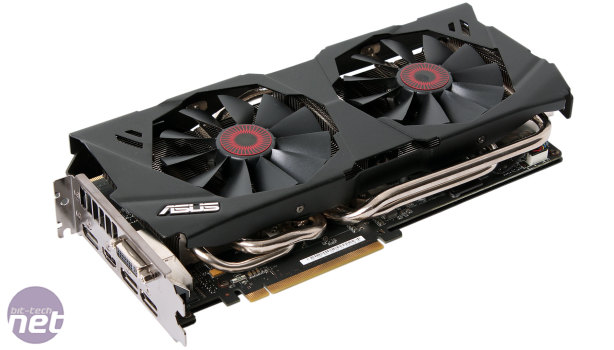
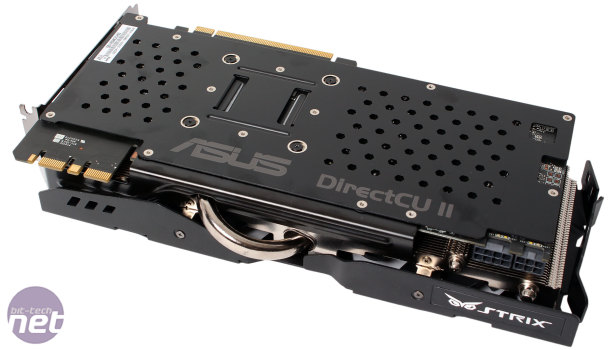
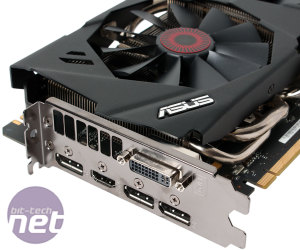
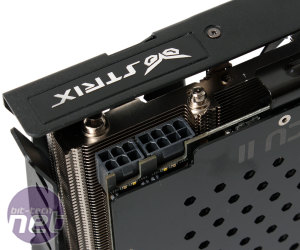
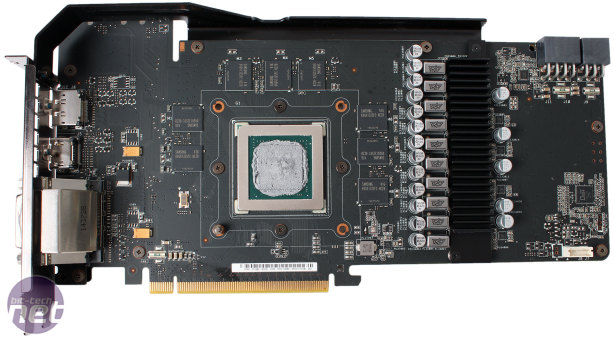
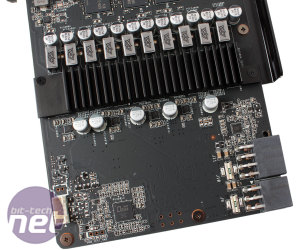
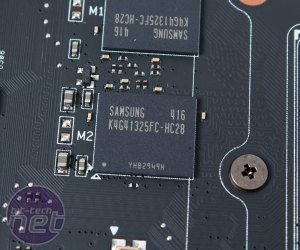
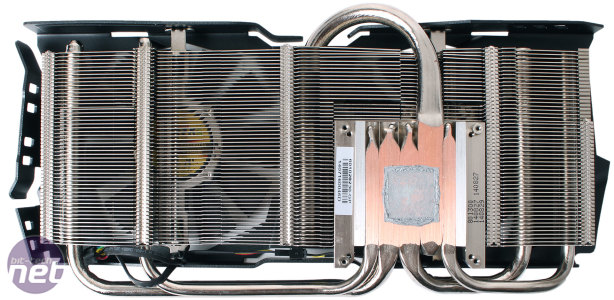







Want to comment? Please log in.